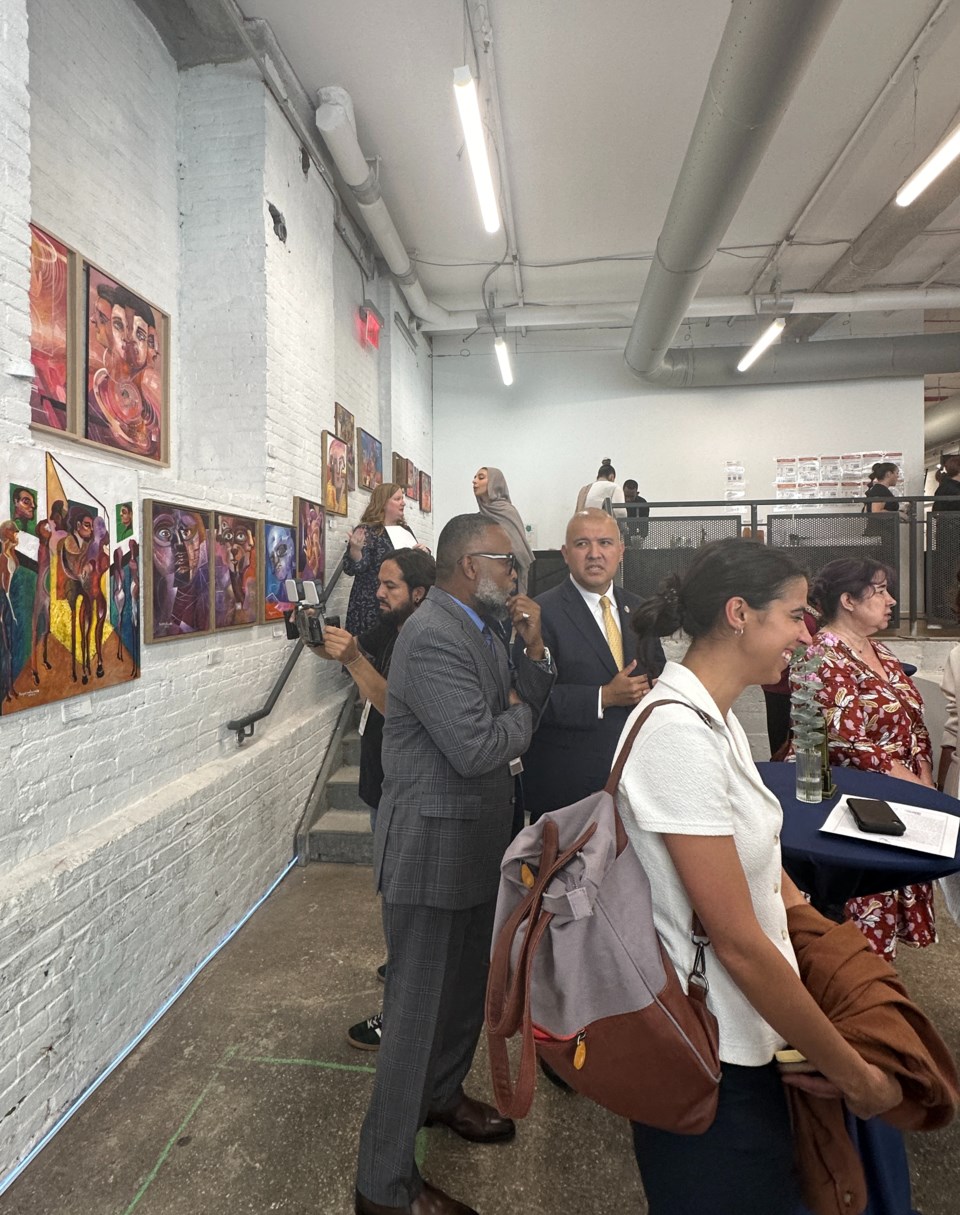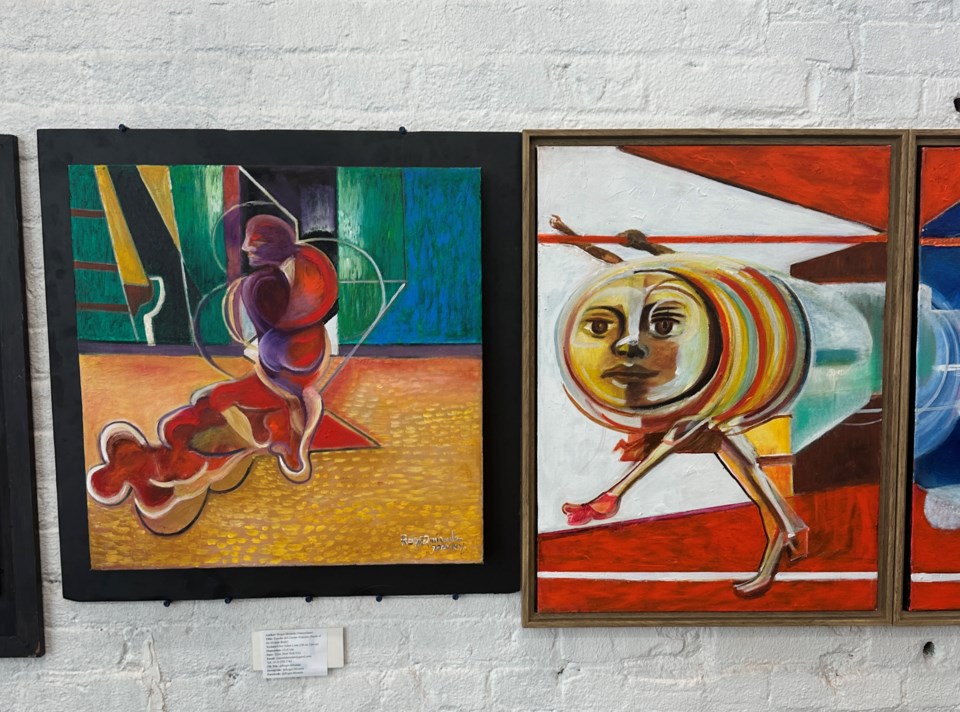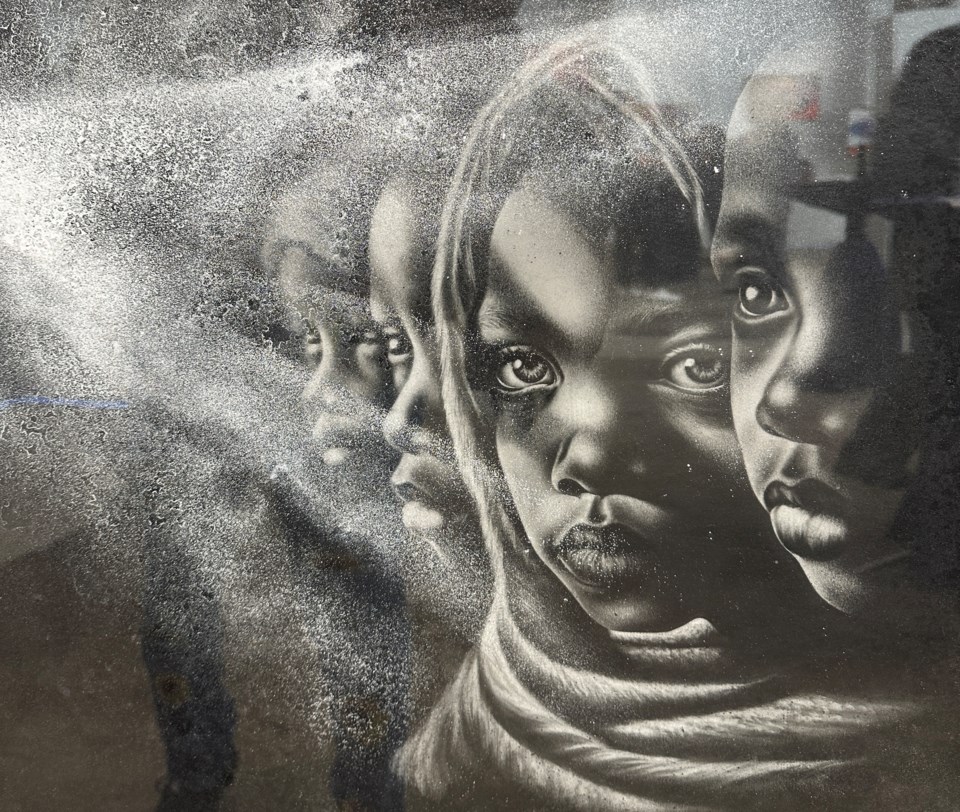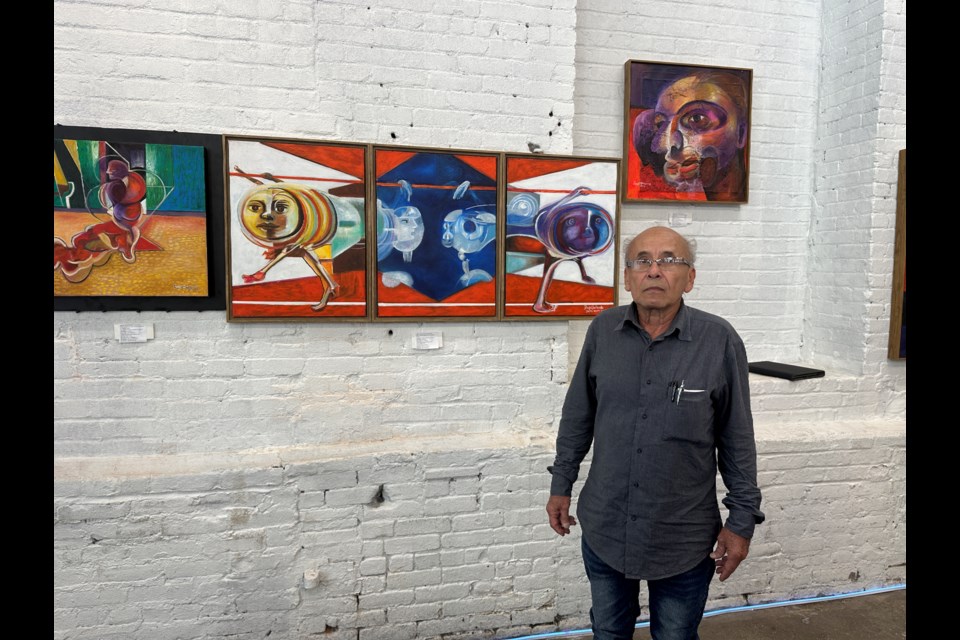NYC Health + Hospitals' Humanitarian Emergency Response and Relief Center (HERRC), in partnership with its Arts in Medicine department, held an asylum seeker art exhibition on Thursday, Sept. 19, at the Hall Street migrant shelter in Clinton Hill.
The exhibit showcased works by two asylum seeker artists, Roger Miranda from Venezuela, and Marcos Ferrera Batista from Brazil.
Both artists have been creating art during their stay at the Hall Street shelter, which has housed approximately 3,200 asylum seekers since opening in September 2023, including over 200 families with children.

An exhibition space was transformed into an art gallery within the Hall Street Shelter. NYC Health + Hospitals' Communications Director Adam Shrier praised the artists and the exhibition’s impact.
"We saw these really talented artists among our team, and we wanted to supply a platform for them– first to secure their art and then provide them with a space to make their art,” Shrier said. “And when we shared it with the team, everybody just immediately recognized how talented these individuals were, and really just wanted to bring attention to all city employees who support them and for the New York City public who they are now living with.”
Artist Roger Miranda reached the United States in February 2024 and immediately traveled to New York City. He earned a PhD in pedagogy in 1981 and went on to teach art and education to high school and university students for the next thirty years, while showing his work in galleries across South America.
His work investigates political, educational, economic and cultural problems in Venezuela and other countries he has called home. His series “Inmigración” explores the struggles of migration, while “Percepción Psicológica” is a set of self-portraits reflecting his experience of displacement.

“It is a work that has involved a lot of research over time in the history of art," said Miranda of the pieces he created for the exhibit. "It is an opportunity to be able to show in this area that wherever we are in life at this moment, culture can represent a circle of peace."
Batista, who entered the U.S. in July 2023, has been making art since childhood. His surrealistic portraits, drawn in charcoal, depict asylum seekers' emotional journeys.
"Each face captures a glimpse of the love, hope, agony, anxiety, fear, and vulnerability asylum seekers experience," Batista said.

Batista hopes the depth of expressions in his portraits can help others better understand the asylum seeker experience and that his work can help support vulnerable communities. He recalled a saying his mom often shared: “Siempre hay un zapato viejo para un pie cansado,” or there’s always an old shoe for a tired foot.
"Art is a universal language. It allows individuals to voice their experiences and heartfelt stories through meaningful expression,” said Manuel Castro, commissioner of the NYC Mayor’s Office of Immigrant Affairs. “Roger and Marcos were courageous enough to express their perseverance and diverse journeys at the Hall St. humanitarian center.”
Miranda said that being in the U.S. was a grace from God.
"This presentation is a thank you to everything that is receiving me in the United States," he said.



.png;w=120;h=80;mode=crop)
